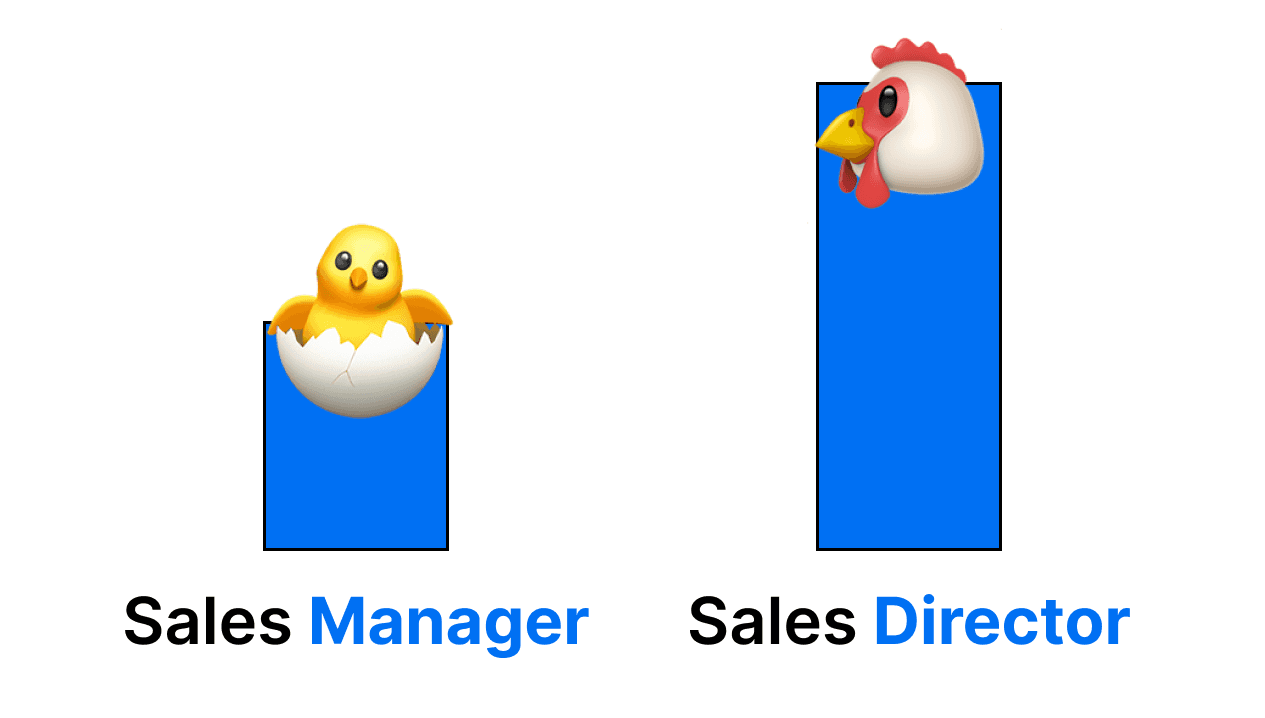
Sales Manager vs Sales Director: What's the Difference?
In the world of sales, there are several roles that play a crucial part in driving business growth. Two of these roles are the Sales Manager and the Sales Director. While they may seem similar at first glance, there are distinct differences between the two positions. In this article, we will delve into the definitions of Sales Manager and Sales Director, explore the differences between them, and provide examples to paint a clearer picture of their respective roles
Defining Sales Manager and Sales Director

1. What is a Sales Manager?
A Sales Manager is an individual who oversees a team of sales representatives. Their main responsibilities include setting sales targets, developing strategies to meet those targets, and monitoring the progress of the sales team. Sales Managers also play a vital role in training and coaching their team members, providing guidance, and addressing any issues that may arise.
But being a Sales Manager is more than just managing a team. It requires strong leadership skills and the ability to motivate and inspire others. Sales Managers need to have a deep understanding of the products or services they are selling, as well as the market and industry they operate in. This knowledge allows them to effectively guide their team and provide valuable insights and recommendations.

Furthermore, Sales Managers are often involved in the recruitment and selection process, ensuring that the team is staffed with talented individuals who can contribute to the company's sales objectives. They carefully evaluate candidates, looking for not only relevant experience but also qualities such as resilience, adaptability, and strong communication skills.
In addition to managing the day-to-day operations of the sales team, Sales Managers are responsible for analyzing sales data, identifying trends, and making data-driven decisions to optimize sales performance. They closely monitor key performance indicators (KPIs) such as conversion rates, average deal size, and customer acquisition costs. This data helps them identify areas for improvement and implement strategies to drive sales growth.
2. What is a Sales Director?
A Sales Director, on the other hand, is a higher-level role that holds a broader scope of responsibilities. While they may still manage a team of sales managers, their main focus is on developing and implementing sales strategies and ensuring their alignment with the organization's overall goals and objectives.
As a strategic leader, the Sales Director works closely with other departments, such as marketing and product development, to drive revenue growth and implement initiatives that enhance the company's market position. They have a more significant impact on shaping the sales culture, setting long-term targets, and identifying new business opportunities.

In addition to their strategic responsibilities, Sales Directors often have a more extensive network and are involved in building and maintaining relationships with key clients and stakeholders. They take the lead in negotiating major deals and developing partnerships that contribute to the organization's success.
Furthermore, Sales Directors play a crucial role in mentoring and developing Sales Managers. They provide guidance and support, helping Sales Managers enhance their leadership skills and achieve their full potential. Sales Directors also stay updated on industry trends and best practices, ensuring that their team is equipped with the knowledge and tools needed to succeed in a competitive market.
Overall, both Sales Managers and Sales Directors are essential roles within an organization's sales function. While Sales Managers focus on managing and developing their team, Sales Directors take a broader strategic approach, driving revenue growth and shaping the company's sales direction. Together, they form a dynamic and cohesive sales leadership team that plays a vital role in achieving the organization's sales objectives.
What's the Difference between a Sales Manager and a Sales Director?
Now that we have defined both roles, let's explore the key differences between a Sales Manager and a Sales Director.
One of the primary distinctions lies in their responsibilities and scope of influence. While Sales Managers focus on managing and guiding their sales team to achieve specific targets, Sales Directors take a more strategic approach and work on a larger scale. They are responsible for shaping the overall sales strategy and ensuring its alignment with the company's objectives.
Another significant difference is their level of involvement in day-to-day operations. Sales Managers often have direct interactions with their team members, providing coaching and assistance on a regular basis. Sales Directors, on the other hand, have a more hands-off approach, delegating operational responsibilities to Sales Managers and focusing on high-level decision-making.
The hierarchy is also a distinguishing factor. Sales Managers typically report to the Sales Director, who holds a higher position in the organizational structure. The Sales Director, in turn, reports to senior executives, such as the Chief Sales Officer or the Chief Executive Officer.
Examples of the Difference between a Sales Manager and a Sales Director
1. Example in a Startup Context
In a startup context, a Sales Manager may be responsible for building a small sales team from scratch, setting individual sales targets, and creating a sales process. The Sales Manager's focus is on achieving short-term sales goals and ensuring the team is performing at its best.
On the other hand, a Sales Director in a startup may have a broader role. They are not only responsible for overseeing Sales Managers but may also be tasked with developing partnerships, exploring new market opportunities, and creating a long-term sales strategy to drive the company's growth.
2. Example in a Consulting Context
In a consulting firm, a Sales Manager may lead a team of consultants, ensuring they are effectively selling the firm's services, reaching revenue targets, and providing exceptional client service. They may also be involved in developing sales training programs tailored to the consulting industry.
A Sales Director in a consulting context may have a more extensive role. They may be responsible for establishing strategic partnerships with other firms, identifying new consulting niches, and formulating a comprehensive sales and marketing strategy to position the consulting firm as a leader in the market.
3. Example in a Digital Marketing Agency Context
At a digital marketing agency, a Sales Manager may manage a team of sales representatives who focus on selling the agency's digital solutions to clients. They may be responsible for analyzing market trends, identifying potential clients, and ensuring the team meets their sales targets.
A Sales Director in this context may promote the agency's services to larger clients, work on strategic alliances with other digital agencies, and spearhead the development of new service offerings. They play a pivotal role in identifying trends in the digital marketing landscape and guiding the agency towards growth in the ever-evolving industry.
4. Example with Analogies
An analogy to understand the difference between a Sales Manager and a Sales Director is to think of a Sales Manager as the captain of a sports team. They manage the day-to-day operations, motivate their team members, and ensure they are properly trained and equipped to win the game.
Contrastingly, the Sales Director can be compared to the head coach. They develop the overall strategy for the team, set long-term goals, and make critical decisions that impact the team's success. They also work closely with other departments, such as marketing and finance, to ensure a cohesive approach towards achieving the organization's goals.
In conclusion, while Sales Managers and Sales Directors both play vital roles in driving sales success, their responsibilities and areas of focus differ significantly. While Sales Managers manage and guide the sales team to achieve short-term goals, Sales Directors take a more strategic approach, shaping the overall sales strategy and driving long-term growth. Understanding the differences between these roles is crucial for organizations to effectively structure their sales teams and maximize their sales performance.


















































































































































